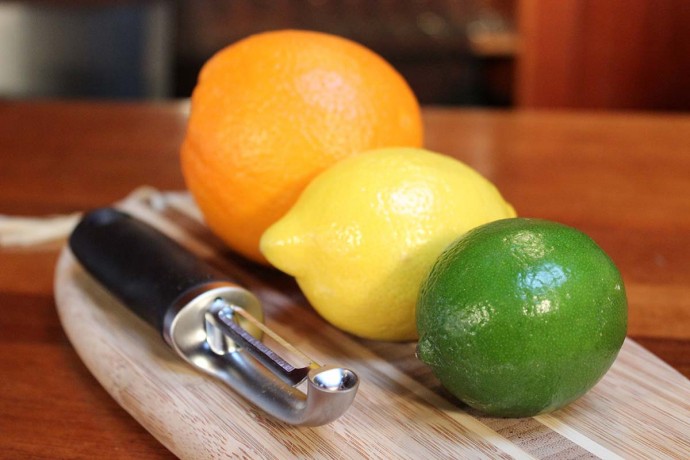It happens often in epicurean circles (and many other parts of life, really) that an element becomes so ubiquitous, so essential, that we hardly give it a second thought. Why do we salt our food? Hell, why do we cook our food before we eat it at all? More often than not, the best answer any of us can give is, “It’s just what you do.” When it comes to craft cocktails, that overlooked and universally-popular element is almost certainly citrus.
Citrus Cocktails at Sea
Citrus, of course, has a long history of going hand in hand with booze. While fruits like limes, lemons, oranges, and grapefruits (and plenty of more arcane varieties, like the Buddha’s hand and yuzu) have been used in food and medicine for millennia, it took the West a bit longer to catch on.
Thanks to the dietary restrictions they imparted, long trips at sea often resulted in Vitamin C deficiency, and the European navies of the colonial period quickly realized that they needed a reliable source of the nutrient to prevent scurvy. Thus, early predecessors of the Daiquiri and the Gin and Tonic were born, as sailors began using their daily rations of rum and gin to take the edge off of the sour limes and lemons (and, in the latter case, the bitter quinine tonic they were prescribed as an antimalarial).
The Science of Sour
The reason citrus cocktails have remained so ubiquitous, though, goes deeper than simple tradition. The main sources of flavor in citrus fruits—citric acid, malic acid, and succinic accid—are extremely appealing in concert with a combination of alcohol, sugar, and bittering agents. Varieties which contain a higher ratio of citric acid to sugar, like lemons and limes, are actually significantly more palatable when their sour elements are cut with some amount of bitterness.
That citric-acid sourness is exactly what makes citrus juice such a common choice to pair with spirits. Powerful flavors of alcohol, particularly in sharper, unaged spirits, benefit from being blended with something that can match their robust profile—and one of the only things that makes someone pucker quite like a shot of vodka is taking a bite out of a lemon. When used in the right proportions, the acidity cuts through the ethanol burn and asserts its flavor as an equal partner in the pairing. As such, citrus does a disservice to subtler spirits, the finer notes of which it can easily overpower.
A number of bartenders these days are beginning to experiment with pure citric acid dissolved in water as a substitute for fresh-squeezed citrus juice. It doesn’t work in all the same contexts, but when a drink needs a sour bite and very little of the associated sweetness (especially one you’re making in a large batch), it does the trick pretty effectively.
Is Fresh Always Best?
The interaction between sour and bitter also gives rise to a somewhat counterintuitive phenomenon. As we don’t hesitate to remind our readers, citrus should always be squeezed fresh immediately before using it in a drink—as the juice sits out, many of the volatile aromatic compounds are lost to evaporation or oxidation, and its flavors and aromas gradually go by the wayside.
In the case of lemon and lime juice, though, letting them sit for a few hours may actually improve the flavor. Bitter limonoid compounds, like limonin and nomilin, tend to develop when the juice is exposed to air, taking the edge off of the extreme sourness of the citric acid. Dave Arnold (author of Liquid Intelligence) performed a series of blind taste-tests and found that people generally preferred their lime and lemon juice aged for about four hours.
Orange juice, on the other hand, doesn’t benefit from those bitter compounds very much at all. It falls on the sugar-heavy side of the citrus spectrum, so even a small amount of extra bitterness can make it taste unpleasant. Grapefruit is more hit-or-miss, depending on the exact variety and freshness, but it’s already so bitter that it can be hard to notice a significant difference.
Shaken, Not Stirred
Texture is also a hugely important factor in the success of citrus juice as a cocktail ingredient. Thanks to the presence of pulp, when the juice is used in a shaken cocktail it adopts a light, frothy character that makes it a perfect base for sours and fizzes, and generally elevates the aromas of any ingredient by introducing air bubbles. Pulpless juices, like apple or cranberry, don’t offer quite the same fullness of character.
So, sure, it might sound kind of dumb to write an article about why citrus cocktails are so popular. But the interplay of flavor, acidity, freshness, and texture actually make for a much more complex picture than we usually bother to think about. And as far as we’re concerned, the unexamined beverage is not worth drinking.
Photo: Will Shenton, Bevvy



